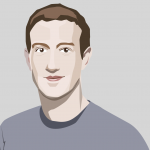 In an age where many kids appear to be permanently tethered to a variety of tablets and smart phones, watching a constant barrage of glorified toy adverts, it’s reassuring to know there’s a film out there with a central premise which not only encourages a child to engage with his imagination and flight of fantasy, but also uses that notion as the means of fuelling the adventure story within the narrative itself. The 1980s was a heady time for the PG-rated fantasy film. Alongside the numerous Amblin’ dream factory titles, Jim Henson’s Muppet-free offerings from that era are still held in high regard today. Another film deserving of its place amongst those is this 1984 big-screen adaptation of a beloved seventies German children’s book. Die unendliche Geschichte (The NeverEnding Story) was pretty much the country’s The Philosopher’s Stone of that time.
In an age where many kids appear to be permanently tethered to a variety of tablets and smart phones, watching a constant barrage of glorified toy adverts, it’s reassuring to know there’s a film out there with a central premise which not only encourages a child to engage with his imagination and flight of fantasy, but also uses that notion as the means of fuelling the adventure story within the narrative itself. The 1980s was a heady time for the PG-rated fantasy film. Alongside the numerous Amblin’ dream factory titles, Jim Henson’s Muppet-free offerings from that era are still held in high regard today. Another film deserving of its place amongst those is this 1984 big-screen adaptation of a beloved seventies German children’s book. Die unendliche Geschichte (The NeverEnding Story) was pretty much the country’s The Philosopher’s Stone of that time.

Author Michael Ende’s tale of a bullied and motherless boy who becomes magically entwined in a mysterious book he discovers was, at that point, Germany’s biggest-budgeted film, costing $27m. But the big-screen adaptation almost fell at the first hurdle when Ende tried to halt production after learning the filmmakers had tinkered slightly with the original ending in his book. Fortunately, his legal attempts were dismissed and the film went ahead. It’s sad that this bad blood resulted from the creative process because, flaws aside, the subsequent film remains a magical, fully-fledged fantasy adventure.

Like many kids-themed films which have grown in stature throughout the years, there’s definitely a fairy-tale-like darkness undercurrent. The scene where the film’s young hero within the book, Atreyu, fails to save his beloved horse Artex from the sludgy death within the Swamp of Sadness is up there with the slaughter of Bambi’s mother on the distress-o-meter. Gmork, the giant wolf-like creature summoned by the film’s abstract antagonist, The Nothing is nightmare fuel for grown-ups, never mind the intended demographic.

The NeverEnding Story’s colourful array of creatures, both large and small, is another reason why the film was endured. Some of those creations look undeniably clunky in this CGI age, often endearing so, but the unescapable fact remains that the practical effects – often used for huge, multiple-operated animatronic models – still help sell a flesh and blood world more successfully than anything computer-aided. Even the colossal Munich soundstages used for the sets – some of which looks like they were recycled for director Wolfgang Petersen’s follow-up space saga, Enemy Mine – would mostly be achieved via green screen today, thus lessening the impact of seeing the characters actually traverse that physical space.

But perhaps the biggest takeaway from The NeverEnding Story is the fanciful idea that imagination is the ultimate saviour, and more accurately, the future isn’t laid out for you – it’s entirely possible to forge your own destiny. One of the most telling moments occurs not within the imaginary world, but when the film’s protagonist Bastian (Barret Oliver) physically recoils after reading a particularly exciting passage in the book he’s been buried in for seemingly hours. Right there is where the film’s real magic lies.
- Screening Nostalgia | Memories of The Goonies
- Spielberg did it again | Why we loved Ready Player One






Leave a Comment